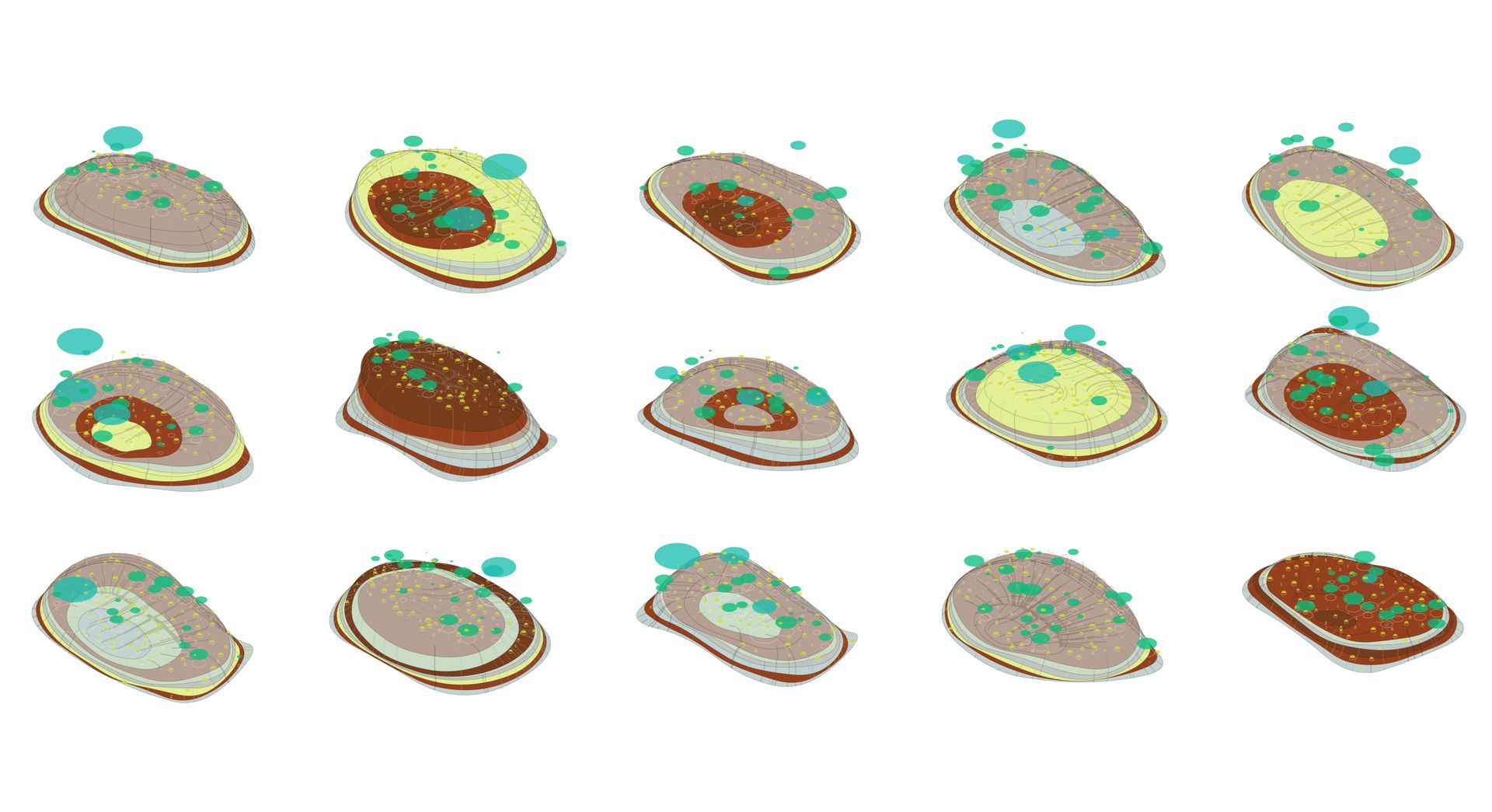I completed my PhD at RMIT’s School of Architecture and Urban Design, where I worked as part of the Spatial Information Architecture Laboratory and the Office of Urban Transformation Research. The research was supported by an ARC Discovery grant, examined in a thesis mode, and supervised by Heike Rahmann, Jane Burry, and Mark Burry.
Abstract
While the use of computational design methods in landscape architecture is not uncommon, they are rarely used to develop performance-driven design strategies. Throughout this thesis, I argue that this shortfall stems from disciplinary differences in the design process and designed medium that are not reflected in common computational design tools. The scope for better reconciling these disjuncts is broad, but especially acute when employing design strategies that consider the performance of complex natural systems. Here, the overlap between disciplinary intent and computational capability is significant as natural systems have unique representational, scalar, and temporal complexities and their design forms a core concern of landscape architecture.
Computation offers new approaches to managing these complexities, but also introduces new challenges. I investigate these using a design research methodology that foregrounds tool development as a reflective practice that can span across specific design contexts and general disciplinary concepts.
In discursive terms, I identify that the aims of computational design broadly align with those emphasised in contemporary landscape architectural theory: to pursue dynamism through generative systems. This seeming similarity masks a difference whereby the agency of computational design systems acts within the design process while the agency of landscapes systems acts within the world. Using the generative techniques of the former to help design the generative effects of the latter creates representations that possess a novel capacity for explicit precision and projection alongside a corresponding increase in implicit uncertainty. As a result, I suggest that traversing the solution space of these models requires a distinct design strategy that emphasises tendency and feedback over convergence. Framing the use of computational design methods in this manner highlights their value and purpose when modelling complex natural systems.
In technical terms, I identify that current computational design platforms tend to employ geometry as the locus of design resolution and data propagation. In doing so they marginalise many informal or aformal landscape conditions and thus limit the scope of modelling. I explore alternatives through a process of tool-making that tests how to create interoperable procedures that each represent different aspects of landscape systems. In many cases, the encapsulation of computational procedures — as both machinic instructions and interface affordances — can enact existing landscape architectural theories of representation, ecology, and emergence. This form of instrumentality offers a distinct, valuable, and under-developed form of disciplinary praxis. However, as I highlight, its execution requires successfully negotiating between two modes of abstraction: the representation of computational procedures as software and the representation of landscape architectural design intent as computational procedures. The strategies I develop to align these two forms of representation help create more accessible and flexible computational methods for modelling complex natural systems.
Featured In
Images developed for my thesis have appeared in Architectural Design’s Urban Futures: Designing the Digitalised City issue (Wiley, 2020).
